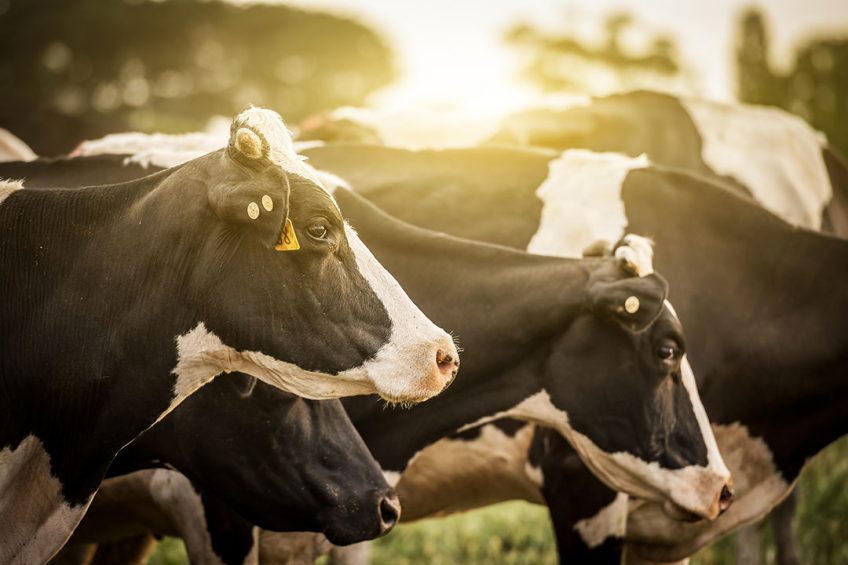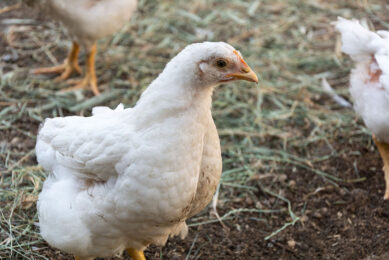Maintenance of gut health in ruminants through nutrition

Effective functionality of the gastrointestinal tract (GIT) and its health are important factors in determining animal performance (growth, milk yield, and meat quality). By applying a nutritional approach, gut health can be maintained, improving animal health and performance.
Several, complex mechanisms are involved in GIT functionality and health, it is therefore crucial to define these interactions so that strategies for the modulation of GIT functionality and health, in the context of improved animal performance, can be developed. The following are the nutritional strategies to be employed for achieving this purpose.
 Dietary protein
Dietary protein
Dietary protein is an important nutritional factor for maintaining immune homeostasis in the GIT. It can also modify the GIT microbial composition and metabolism modulating the production of antimicrobial peptides that can interfere with the growth and the adhesion of pathogens to the intestinal mucosa.
 Dietary fibre
Dietary fibre
Low-fibre diets can be very stressful for animals because they allow fermentation acids to accumulate in the rumen. The acid build-up can cause ulcers in animals consuming too much grain with little fibre. The infective bacteria then come from the rumen through the ulcers into the bloodstream and finally into the liver, where they cause abscesses. Dietary fibre is also essential for the stimulation of beneficial bacteria such as lactobacillus which sustain gastrointestinal health as the attachment of Lactobacilli to the GIT mucosa can protect animals from GIT infection. However, these beneficial effects of dietary fibre on gastrointestinal functionality can be easily offset by the fact that dietary fibre can decrease total tract digestibility as a result of increased bulk in the large intestine and faeces. Therefore, excess fibre can have the opposite effects while moderate levels of fibre can improve GIT functionality and animal performance.
 Dietary fat
Dietary fat
The addition of fat to the ruminant rations is an efficient way of reducing methane production and hence improving rumen health, energy utilisation, and animal performance. A 20% reduction in methane emission could allow growing cattle to gain an additional 75 g/d of weight. In lactating cows, a 20% reduction in methane emissions represents the same amount of energy needed to synthesise 0.6 kg/d of milk. The effect of fats on methane production may, however, vary depending on the fat source (Table 1), and maybe attributed to the bio-hydrogenation of unsaturated fatty acids in the rumen, promotion of propionic acid production, and prevention of protozoa activity. The high grain diets can promote an overgrowth of C. perfringens, bacteria associated with the sudden death syndrome in feedlot cattle. These diets may further promote E-coli within the digestive tract of cattle and hence cause harm to the animal. With high grain diets, saliva production is reduced and the rumen pH may drop to a level that is associated with the occurrence of acidosis. In this latter case, it is recommended to increase the proportion of the forage fed during particularly cold weather, as the effects of acidosis are worsened if the animal is also suffering from cold stress.
 Grazing management
Grazing management
In most grazing conditions, gastrointestinal parasitism may develop through the establishment of a physiological association between the parasites and their host animals. The internal parasite residing in the true stomach (abomasum) such as H. contortus and O. ostertagia may cause damages to the HCL-secreting glands. As a result, the pH level in the gastric liquors increases to about 7 or more, which leads to increased production of gastrin hormone in the stomach, thereby increasing the secretion of water from the liver, pancreas, and the distal part of the small intestines and – in turn – causes diarrhoea and weight loss.
The internal parasites residing in the small intestines such as T. colubriformis cause atrophy of the intestinal villi and hence reduces their ability to increase the surface area available for absorption and utilsation of feeds. In extreme cases, these parasites may cause damages to the intestinal wall itself and hence allow for the passage of the immunoglobulins from the blood plasma to the gastric cavity with an eventual loss of these immunoglobulins through faecal excretion and a decreased resistance of animals to the microbial diseases.
When adopting mixed grazing, the stocking rate for each species is lower, thus reducing the overall degree of contamination. Here, it was found that the numbers of eggs from intestinal parasites in droppings from lambs were 492 and 198 for single and mixed grazing, respectively. It was also found that the numbers of infective larvae per kg grass in a given season were 235, 178, and 97 for the cattle areas, sheep areas, and the mixed areas, respectively.
The cross-immunity between cattle and sheep is also a mechanism by which mixed grazing helps control gastrointestinal parasites. The intake by sheep of larvae from the bovine origin is not only ineffective in sheep because of the host specificity, but also stimulates immunity in sheep to challenge with their own parasite species (Table 2). Such resistance was also found in cattle, but to a less extent, as a result of the intake of larvae from the ovine origin. In either case, the complete recovery from the gastrointestinal parasitism may not be expected through the grazing system alone. The use of anthelmintics should also be considered for better control of the parasite problem. This latter measurement would, however, be more effective and economical when considered along with mixed grazing.
 Colostrum feeding of calves
Colostrum feeding of calves
Colostrum should be fed in adequate amounts (10% of calf body weight) within the first 24 hours after birth. After providing adequate colostrum on day one, a second dose should be fed (especially useful in stressed calves). The immunoglobulins in colostrum will coat the small intestine and prevent attachment and colonisation by pathogens. Additionally, colostrum provides an excellent source of energy and contains compounds such as lactoferrin and fatty acids that benefit the calf.
Conclusion
Under confined feeding operations, cattle should receive sufficient amounts of protein fat, and fibres, with controlled amounts of grain, to maintain gut integrity and minimise the proliferation of GI pathogens. Mixed grazing should be adopted as it helps control GI parasites through the cross-immunity. For control of the gut health of calves, colostrum should be given immediately after calving. This would provide the antibodies needed to fight against the GI pathogens.
References available on request
 Beheer
Beheer





 WP Admin
WP Admin  Bewerk bericht
Bewerk bericht